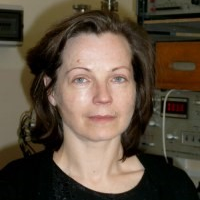Surface Chemistry in Catalysis
A special issue of Catalysts (ISSN 2073-4344).
Deadline for manuscript submissions: closed (15 October 2020) | Viewed by 21234
Special Issue Editor
Interests: electron spectroscopic methods; surface analyses; surfaces and interfaces; carbon nanomaterials; biomaterials
Special Issues, Collections and Topics in MDPI journals
Special Issue Information
Dear Colleagues,
This issue is dedicated to aspects of chemical and physical processes at surfaces and interfaces, preferably in significant and novel reactions of heterogeneous catalysis. It is expected to cover a wide range of fundamental experimental specific surface analytical techniques and theoretical modeling studies oriented towards academic and industrial readers. The topics are supposed to provide an insight on atomic and molecular level into catalytic processes by combining the relation between the synthesized catalyst, adsorption and desorption processes, surface and interface characteristics, catalytic performance, and kinetics and mechanisms.
The following topics of surface sciences are included:
- Catalysis, electrocatalysis, and photocatalysis;
- Model and industrial conditions reactions;
- Nanoscale surface engineering, modification, and functionalization;
- Surface reactivity;
- Interactions of surfaces with polymers, biomaterials;
- Catalytic reactions of significant impact in addressing current challenges and societal demands.
Dr. hab. B. Lesiak-Orłowska
Guest Editor
Manuscript Submission Information
Manuscripts should be submitted online at www.mdpi.com by registering and logging in to this website. Once you are registered, click here to go to the submission form. Manuscripts can be submitted until the deadline. All submissions that pass pre-check are peer-reviewed. Accepted papers will be published continuously in the journal (as soon as accepted) and will be listed together on the special issue website. Research articles, review articles as well as short communications are invited. For planned papers, a title and short abstract (about 100 words) can be sent to the Editorial Office for announcement on this website.
Submitted manuscripts should not have been published previously, nor be under consideration for publication elsewhere (except conference proceedings papers). All manuscripts are thoroughly refereed through a single-blind peer-review process. A guide for authors and other relevant information for submission of manuscripts is available on the Instructions for Authors page. Catalysts is an international peer-reviewed open access monthly journal published by MDPI.
Please visit the Instructions for Authors page before submitting a manuscript. The Article Processing Charge (APC) for publication in this open access journal is 2700 CHF (Swiss Francs). Submitted papers should be well formatted and use good English. Authors may use MDPI's English editing service prior to publication or during author revisions.





